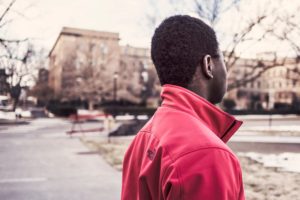The momentum for educational advocacy in the Tampa Bay area has been met with resistance. Although the Tampa Bay Times’ series “Failure Factories” garnered national attention in 2015, little has changed in the region, particularly in Pinellas and Manatee Counties. In fact, it likely has gotten worse. Since the Times published their exposé on the deplorable treatment of primarily young black students in Pinellas schools, no policy or funding initiatives have taken hold in the community. In addition to the lack of any progress in Pinellas County, Manatee County’s social infrastructure has been crumbling under the weight of an opioid epidemic. The crisis is so extreme that Manatee County has been labeled the opioid overdose capital of Florida. In acknowledging the gravity of this epidemic, the Governor declared a state of emergency in May 2017. As if growing up wasn’t hard enough, many young students in Manatee County are now being removed from their homes because their parents are addicts. The opioid epidemic is having a ripple effect across many other social services including relative caregiver needs, foster placement, and educational advocacy.
Although the Failure Factories articles were published in 2015, the following statistics still ring true for Pinellas County:
1) Pinellas County suspends black children at much higher rates (from 17% to six times higher) than the six other large school systems in Florida.
2) More than half of the suspensions given to black students are for non-violent offenses … They [are] for hard-to-define infractions such as “not cooperating,” “unauthorized location,” and minor “class disruption.”
3) In five years, black students lost a combined 45,942 school days to suspensions for minor offenses. White students, who outnumber black students 3 to 1, lost 28,665 days by comparison.
4) Pinellas schools suspended blacks at four times the rate of other children based on their respective shares of the population … one of the widest disparities in the state.
5) Pinellas is one of only two large school districts in the state that does not use a discipline matrix.
6) Pinellas cut all funding for suspension centers where kids could do school work rather than stay home while being punished and prohibits suspended high school students from earning full credit for make-up work.
To better visualize the segregation of Pinellas County’s Failure Factories and to identify additional target areas in Pinellas and Manatee Counties, we created a map.
As you can see in the map legend, the layers include percent of black population (shades of blue based on the 2010 U.S. Census), social vulnerability (shades of green which include socioeconomic status, housing composition, disability, minority status, language, housing cost, and transportation), Pinellas County Schools (black diamonds), Manatee County Schools (colored diamonds), and the Failure Factories (larger colored diamonds). The darker the shading on the map, the more marginalized the community. For example, South Pinellas County exhibits dark shades on the social vulnerability index as well as black population. It is also the region where the Failure Factories produce the lowest test scores in the state. However, just because the media has focused on South Pinellas County does not mean other areas are not experiencing the same educational struggles. Manatee County schools are only now emerging with tangential crises born from the opioid epidemic, but we can safely assume that the school-to-prison pipeline will only expand in a county where nearly half of the population is struggling with drug addiction and parenting young children.
 It is well documented that the school-to-prison pipeline overwhelmingly impacts young black students more than any others, but what is often overlooked is the fact that many behavioral issues that initiate law enforcement involvement are based on developmental challenges. Many students who are removed from classrooms for misbehavior suffer from a disability. Due to the marginalized status of young black students, they are often overlooked for what the law requires in delivering education to all children equally. They are not assigned an individual education program (IEP) and are instead disciplined without sympathy for their developmental needs.
It is well documented that the school-to-prison pipeline overwhelmingly impacts young black students more than any others, but what is often overlooked is the fact that many behavioral issues that initiate law enforcement involvement are based on developmental challenges. Many students who are removed from classrooms for misbehavior suffer from a disability. Due to the marginalized status of young black students, they are often overlooked for what the law requires in delivering education to all children equally. They are not assigned an individual education program (IEP) and are instead disciplined without sympathy for their developmental needs.
To comply with the federal Individuals with Disabilities Education Act (IDEA), schools must try to meet the individual needs of children with disabilities by providing special education and related services according to a unique Individualized Education Plan (IEP) written for each child. Children with disabilities are entitled to related supports, services, therapies, and/or interventions to help them learn, at no cost to their family. These related services are to be included in the child’s IEP.
Needless to say, it is critical that children with disabilities get a thorough IEP to ensure they get the supports they need to succeed.
It is equally critical that these services and interventions be put in place as soon as possible. Research shows most children with disabilities are not adequately assessed by the public school system for interventions until the third grade. At this point, the chance that interventions and IEPs will provide successful results is extremely low. Intervention after the third grade sets the child up for a pattern of retention, which ultimately leads to lowered self-esteem and school performance. Once in place, advocacy to ensure the IEP and the proper interventions for success are followed, revised regularly, and based on individual needs of the student are imperative. Putting an IEP in place that is not carried out day to day by teachers in the classroom, or which provides interventions that do not address the individual student’s disability can be more damaging to the child in the long run, and that is where advocacy on behalf of the individual student is so critical. Many disadvantaged students who also have a learning disability come from families living in poverty, with parents who themselves have undiagnosed learning disabilities and are not capable of providing the advocacy on behalf of their children within the school system, which, frankly, also failed them. This is where legal aid advocacy can intervene to provide representation not only for the child, but also for the family as a whole.
In Pinellas and Manatee Counties, many children with disabilities are not even evaluated for a disability and/or never receive an appropriate IEP.
Evidence suggests that the process for getting an IEP in place – let alone having it successfully implemented – is complicated, confusing, and frustrating. According to the Pinellas County School Board’s website, its public schools currently serve approximately 13,643 students with disabilities. Manatee County Schools serve approximately 7,250 students with disabilities. According to the coordinator of the Sixth Judicial Circuit Crossover for Children Program, most children in the juvenile court, especially those in foster care, do not have parents who are active in the development of their IEPs. Many of these youths are denied services or placed in more restrictive classroom settings than necessary. The circuit public defenders have indicated that they would welcome assistance to advocate for these children’s IEP development.
Children in foster care, of course, have a plethora of legal needs.

While they are represented in dependency and criminal court by public defenders and have Guardian ad Litem representation, they do not have legal advocates to safeguard their educational rights in Pinellas or Manatee Counties. For those who are academically challenged, IEPs and support services are crucial. For those who manage to finish high school and age out of foster care, college admission can present another set of problems.
It is for all of the reasons outlined above that GLS seeks to create an educational advocacy project. Funding is still being sought for this much needed service, but GLS continues to fight for the rights of children and their families who deserve equal access to justice. The overarching goal of our project would be to ensure that all children in Pinellas and Manatee Counties – regardless of their disability, income, race, ethnicity, religion, dependency status, or juvenile justice background – have equal access to quality public education.
There are several ways you can help us make this goal a reality:
Let’s come together in putting children first and fight for quality education and equal access to justice for all.